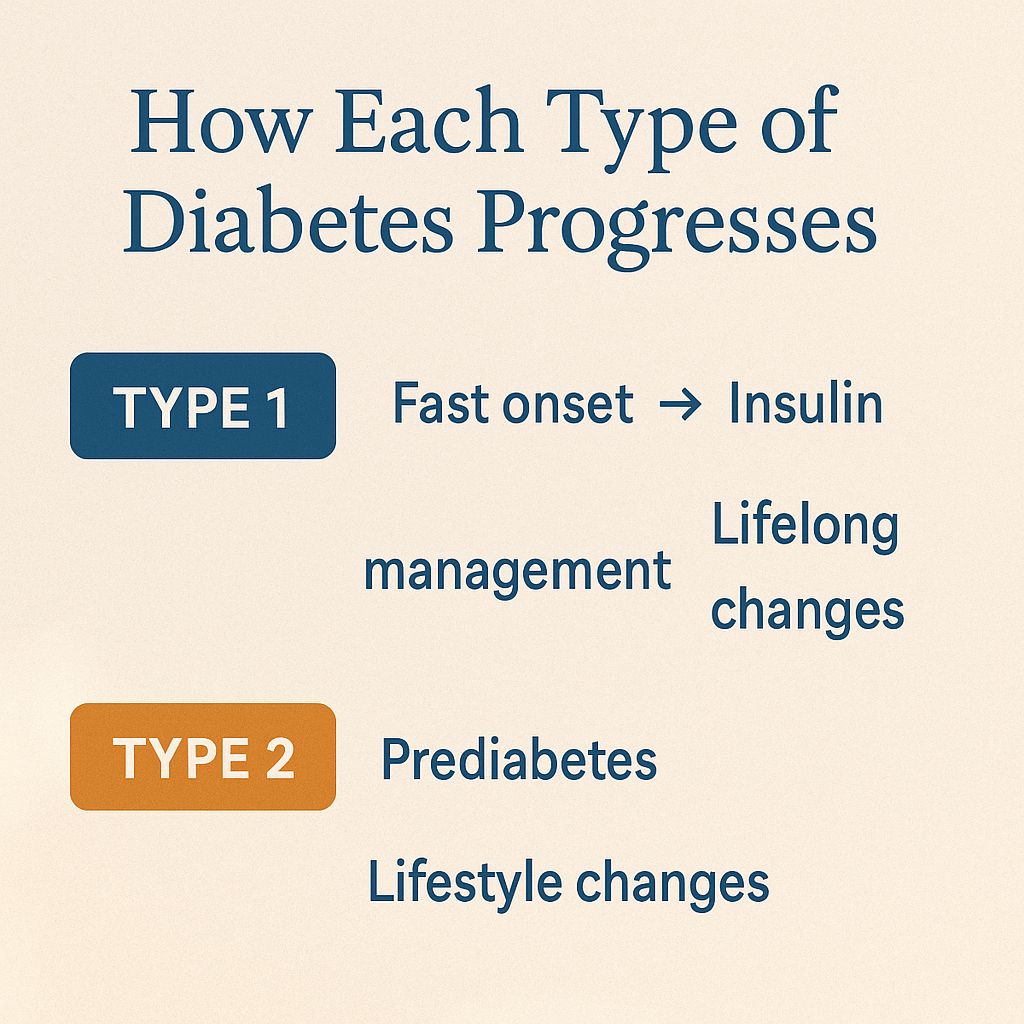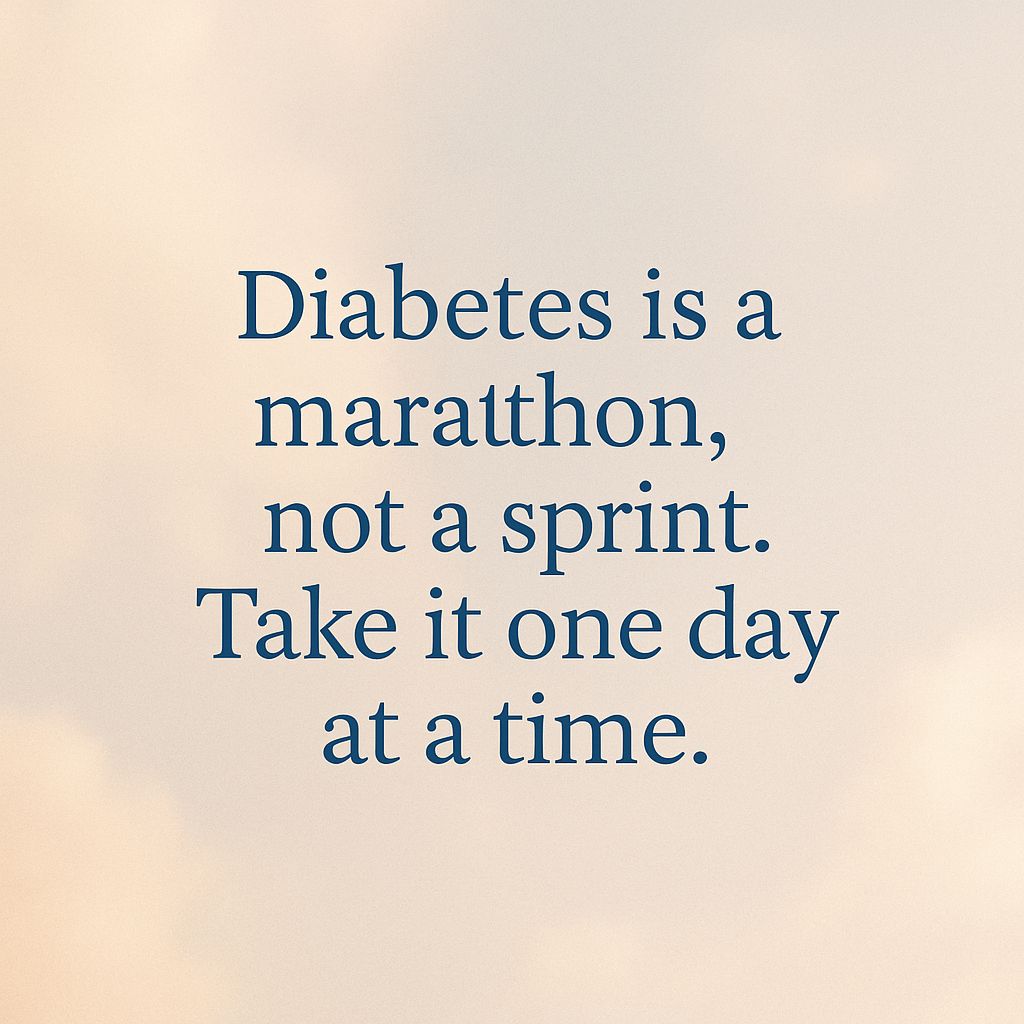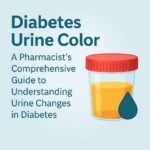If you or a loved one has been diagnosed with diabetes, one of the most common questions that comes up is:
“Which is worse—Type 1 or Type 2 diabetes?”
As a licensed pharmacist who’s worked with hundreds of diabetes patients, I understand how confusing and overwhelming this question can feel. Both types of diabetes are chronic, serious conditions that require lifelong management—but they’re very different in cause, treatment, and risk profile.
In this guide, I’ll break down the key differences, risks, challenges, and management strategies for Type 1 and Type 2 diabetes. By the end, you’ll not only understand which type might be “worse” in specific scenarios—but you’ll also feel more confident in managing either one.
Understanding Diabetes: A Quick Overview
Diabetes mellitus is a chronic metabolic condition where the body has trouble regulating blood sugar (glucose) levels. Normally, your body uses insulin—a hormone made by the pancreas—to help glucose from food enter your cells for energy.
https://www.diabetes.org.uk/diabetes-the-basics/differences-between-type-1-and-type-2-diabetesIn diabetes, this system doesn’t work properly. As a result, blood sugar levels can rise too high (hyperglycemia), leading to damage in organs like the eyes, kidneys, heart, and nerves.
There are two main types of diabetes:
- Type 1 Diabetes: An autoimmune condition where the body attacks its own insulin-producing cells.
- Type 2 Diabetes: A metabolic disorder where the body becomes resistant to insulin or doesn’t produce enough of it.
What Is Type 1 Diabetes?
Cause:
Type 1 diabetes (T1D) is an autoimmune disease. The body’s immune system mistakenly attacks and destroys the insulin-producing beta cells in the pancreas.
Who It Affects:
- Usually diagnosed in children, teens, or young adults, though adults can develop it too.
- Accounts for about 5-10% of all diabetes cases.
Treatment:
- Requires daily insulin injections or an insulin pump.
- Blood sugar monitoring is essential multiple times a day.
- No cure; lifelong insulin dependence.
Onset:
- Sudden and dramatic. People often feel very sick at diagnosis.
What Is Type 2 Diabetes?
Cause:
Type 2 diabetes (T2D) is primarily caused by insulin resistance. The body either doesn’t use insulin properly or doesn’t make enough to keep blood sugar in check.
Who It Affects:
- Usually diagnosed in adults over 40, but rising in younger people.
- Accounts for 90-95% of diabetes cases.
Treatment:
- Often starts with lifestyle changes: diet, exercise, weight loss.
- May require oral medications and eventually insulin.
- Blood sugar monitoring varies.
Onset:
- Gradual. Many people have prediabetes for years before diagnosis.
Key Differences: Type 1 vs Type 2 Diabetes
| Feature | Type 1 Diabetes | Type 2 Diabetes |
| Cause | Autoimmune destruction | Insulin resistance |
| Age of onset | Usually under 30 | Usually over 40 (but getting younger) |
| Body weight | Often normal or underweight | Often overweight or obese |
| Insulin requirement | Immediate and lifelong | Eventually, not always at first |
| Preventable? | No | Often preventable/ reversible early |
| Onset speed | Rapid | Slow |
| Risk of DKA* | High | Low (but possible) |
| Long term risks | High if uncontrolled | Also high, especially cardiovascular |
| Monitoring required | Frequent | Depends on progression |
DKA = Diabetic Ketoacidosis, a life-threatening complication.

Which Is Harder to Manage Day-to-Day?
From a pharmacist’s perspective:
Type 1:
- Requires constant insulin dosing
- Risk of hypoglycemia (low sugar)
- Needs carb counting, insulin-carb ratio tracking
- Daily decisions are critical and complex
Type 2:
- Starts easier (lifestyle and pills)
- Becomes complex over time if not managed
- Less urgent decisions early on, but long-term risk accumulates
Verdict: Type 1 is harder to manage daily, especially early on.
Long-Term Complications: Who Has It Worse?
Both types can lead to:
- Heart disease
- Kidney damage
- Eye problems (retinopathy)
- Nerve damage (neuropathy)
- Amputations
However:
- People with Type 2 often have other health issues like high cholesterol, obesity, and hypertension, which compound risks.
- Type 1 patients may have better control from younger ages but are also exposed to high sugar for a longer lifetime.
Verdict: Type 2 often has worse long-term outcomes due to co-existing conditions.
Mental and Emotional Toll

Living with any chronic illness affects your mental health.
- Type 1: Fear of sudden lows, insulin anxiety, burnout from strict management
- Type 2: Guilt over lifestyle, stigma, often under-supported
Studies show higher depression and anxiety in both, but particularly in young people with Type 1.
Verdict: Both carry heavy emotional burdens—it depends on the individual.
Cost of Treatment and Lifestyle Impact
| Factor | Type 1 Diabetes | Type 2 Diabetes |
| Medication cost | High (insulin, pumps, CGMs) | Medium (pills, insulin later) |
| Lifestyle change | Required from day one | Often delayed |
| Daily impact | High (dosing, checking, planning) | Medium to high (diet, exercise) |
| Insurance dependence | Very high | Moderate to high |
Verdict: Type 1 is costlier and more invasive to daily life.
Can One Turn Into the Other?
• Type 1 cannot become Type 2, but people with T1D can develop insulin resistance—a condition called “double diabetes.”
• Type 2 can progress to insulin dependence, but it doesn’t turn into Type 1.
Verdict: They are distinct diseases but can overlap in complexity.
Which Is More Deadly?
Without treatment:
• Type 1 is immediately life-threatening due to DKA.
• Type 2 kills slowly via heart attacks, kidney failure, strokes.
With treatment:
• Both are manageable.
• Death risk rises with poor control in either case.
Verdict: Untreated Type 1 kills faster. Untreated Type 2 kills silently.
Pharmacist’s Advice on Living Well With Diabetes
No matter which type you have, the goal is consistent blood sugar control and prevention of complications.
My core advice:
• Education: Understand your condition.
• Nutrition: Focus on whole foods, low GI carbs.
• Monitoring: Use CGMs or glucometers regularly.
• Movement: Daily activity helps both types.
• Support: Join diabetes support groups or see a counselor.
Frequently Asked Questions
Can Type 2 diabetes be reversed?
Yes, in many cases through diet, weight loss, and exercise, especially if caught early.
Is Type 1 diabetes genetic?
There’s a genetic predisposition, but environment and autoimmune triggers play a major role.
Can you prevent Type 1 diabetes?
Currently, no. Research is ongoing.
Can you live a normal life with diabetes?
Absolutely. With modern tools and knowledge, people with both types live long, healthy lives.
Final Verdict: Which Is the Worst Diabetes Type?
There’s no one-size-fits-all answer. From a medical and pharmacist’s perspective:
• Type 1 is harder to manage, more expensive, and demands constant attention.
• Type 2 is more common, creeps up silently, and brings greater risk of heart disease and complications if not managed.
So, which is worse?
Type 1 is more intense day-to-day.
Type 2 can be more dangerous long-term if ignored.
The worst diabetes type is the one that’s uncontrolled.
With the right support, education, and treatment—neither has to ruin your life.
From your pharmacist:
Whether you or a loved one has Type 1 or Type 2, don’t let fear paralyze you. Knowledge is power. And with support, diabetes can be managed—not just endured.



